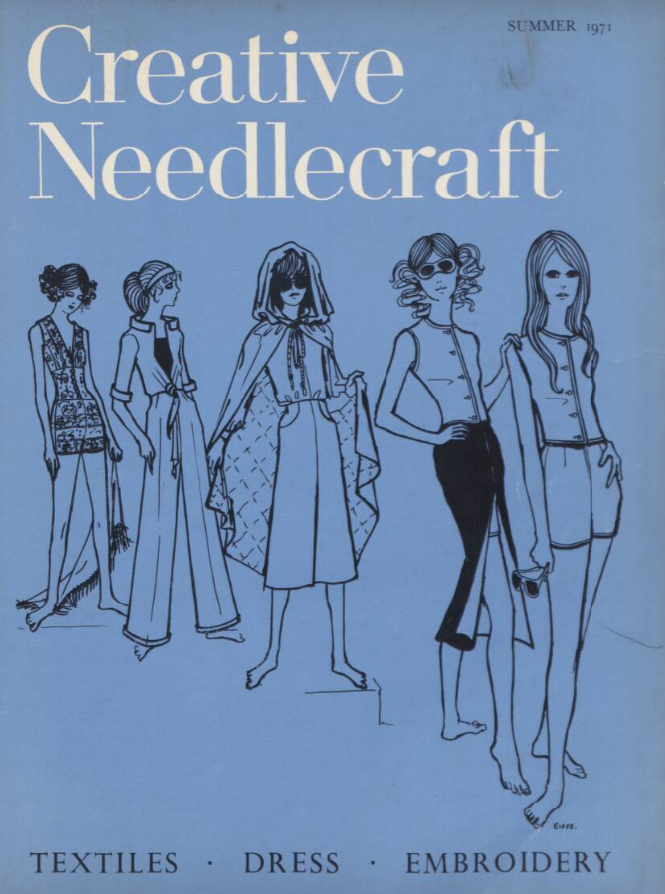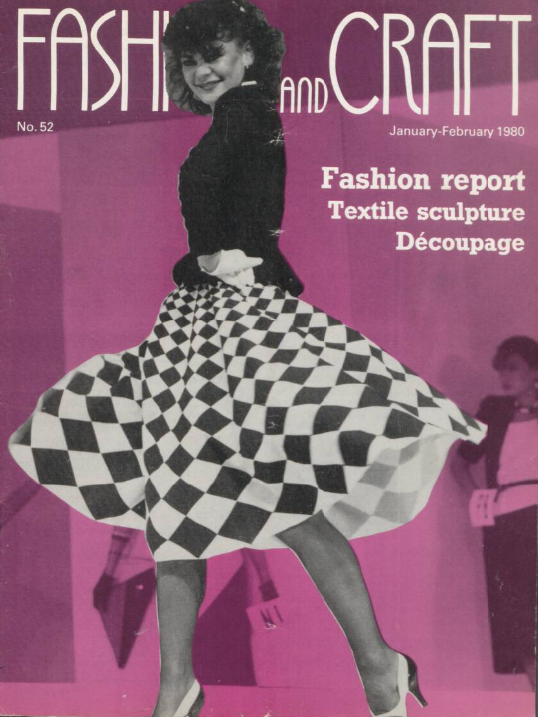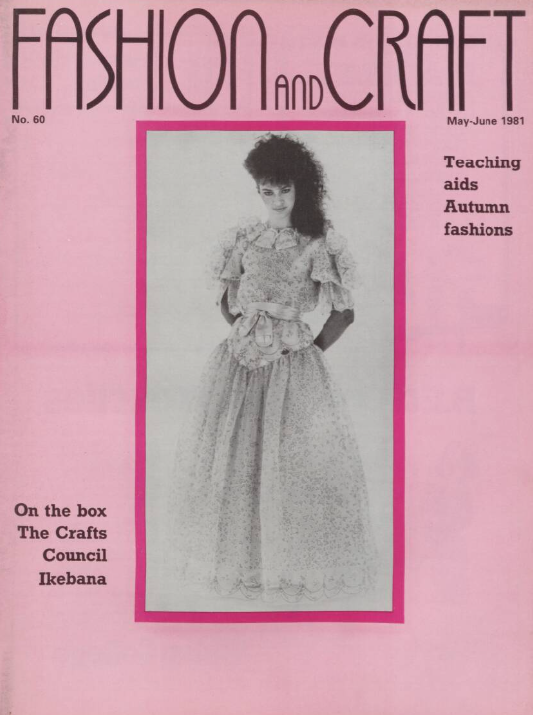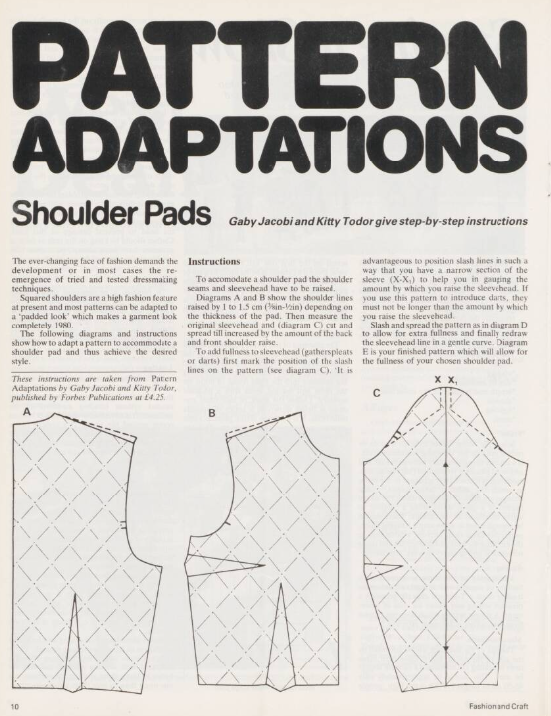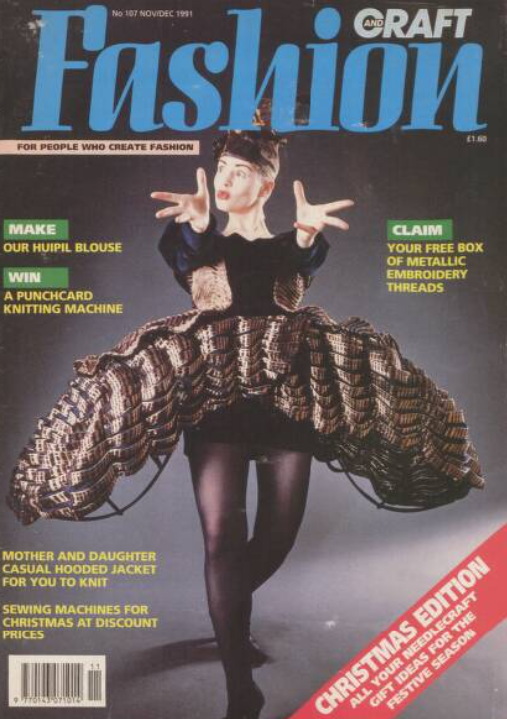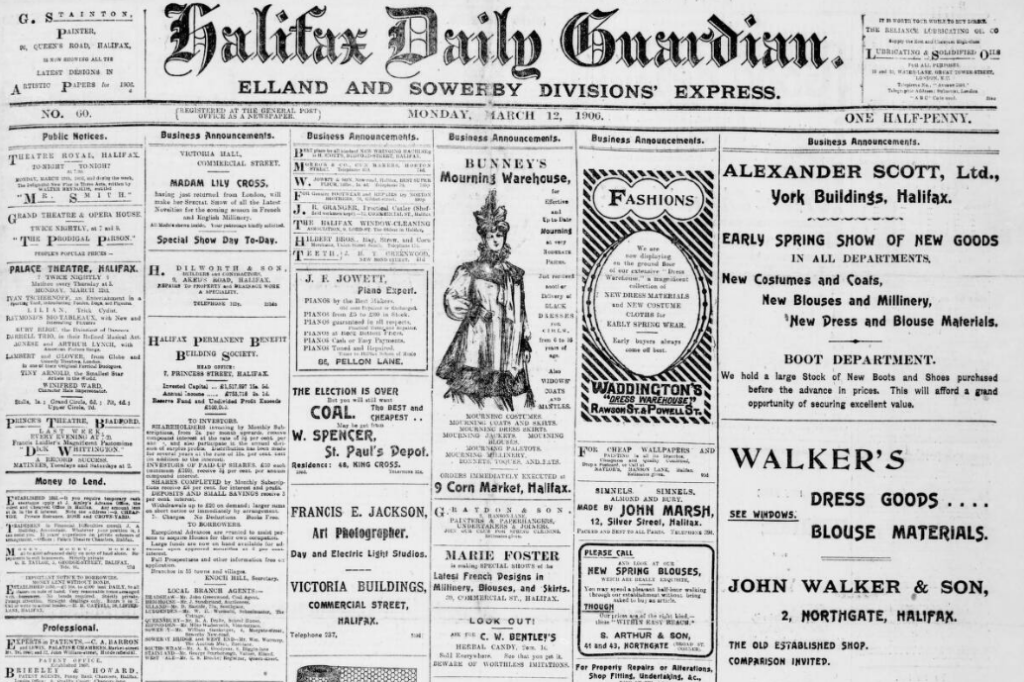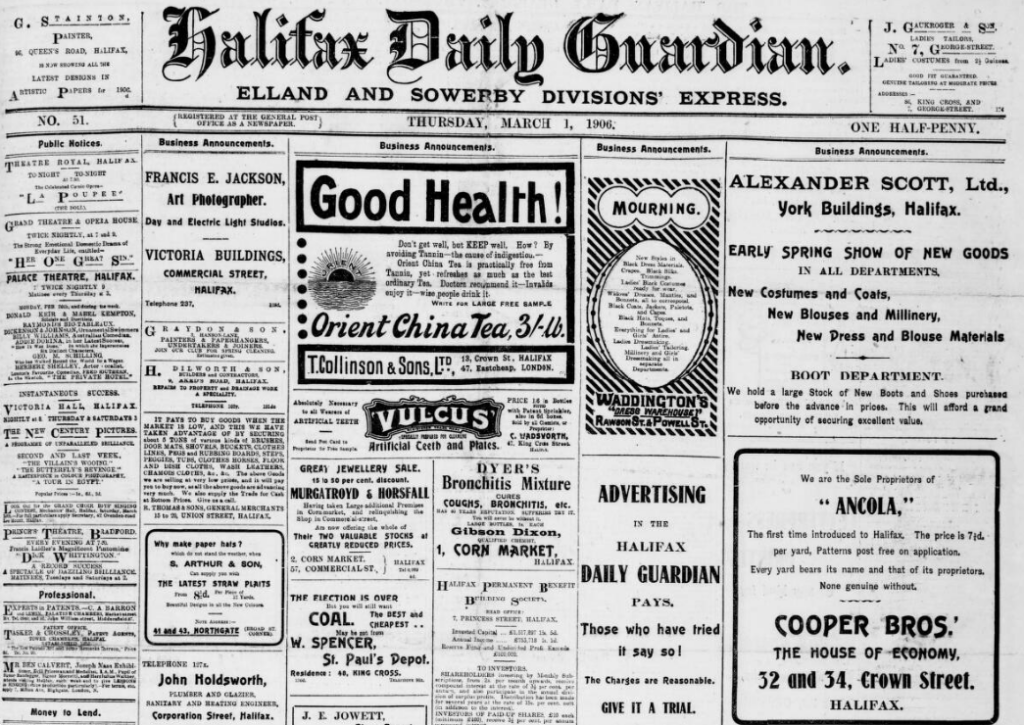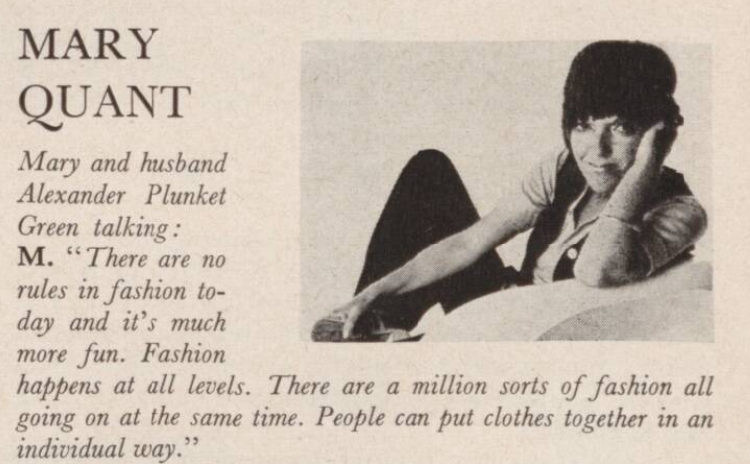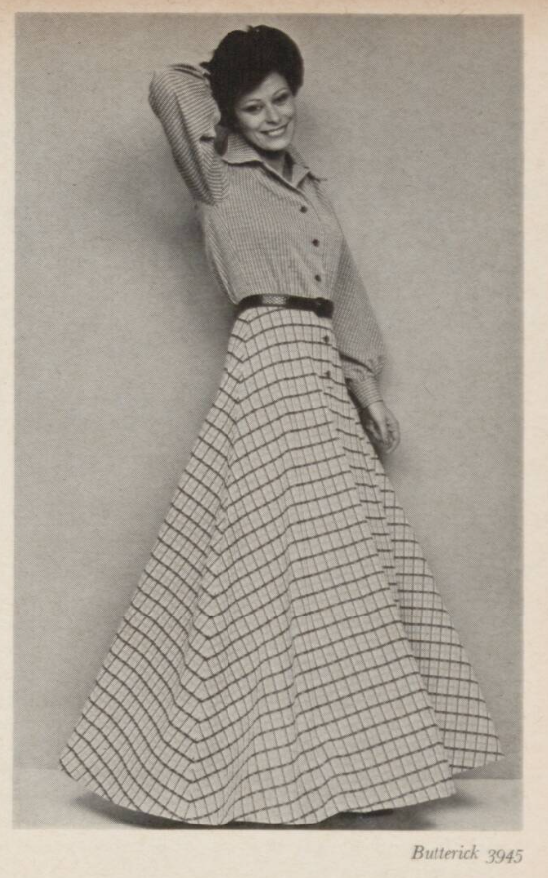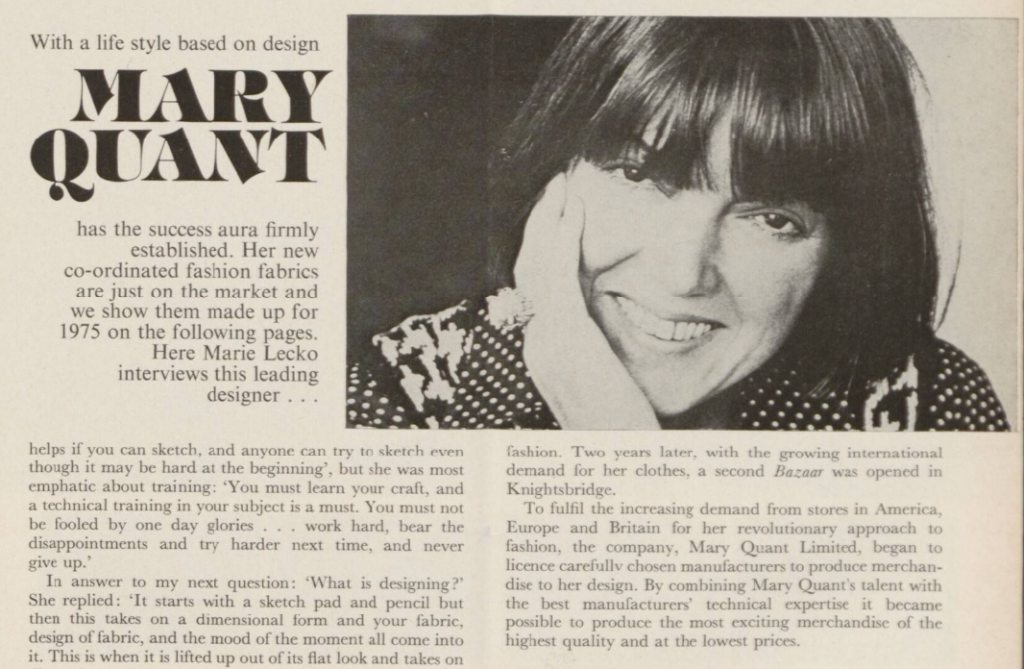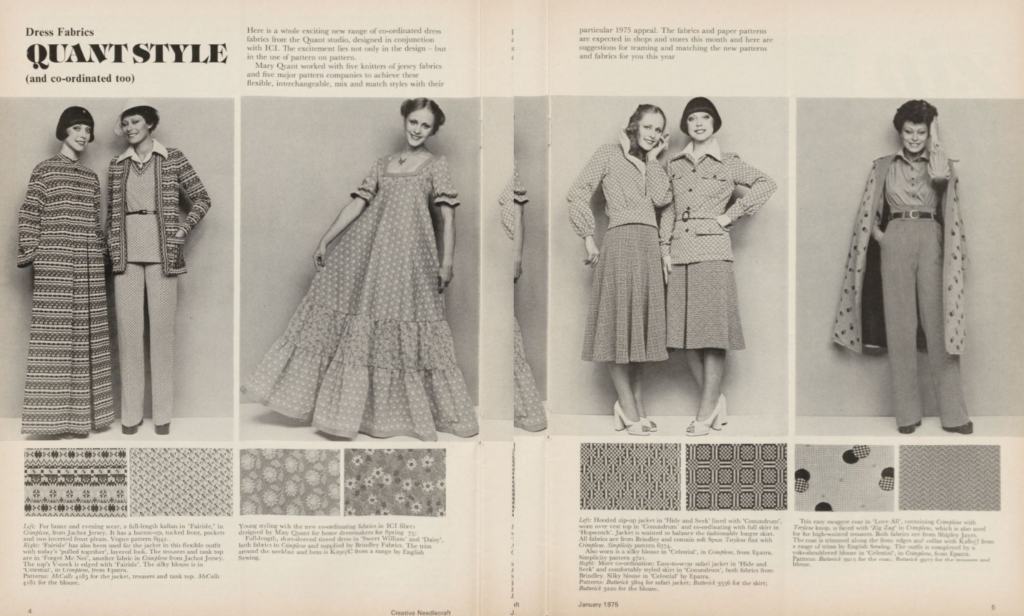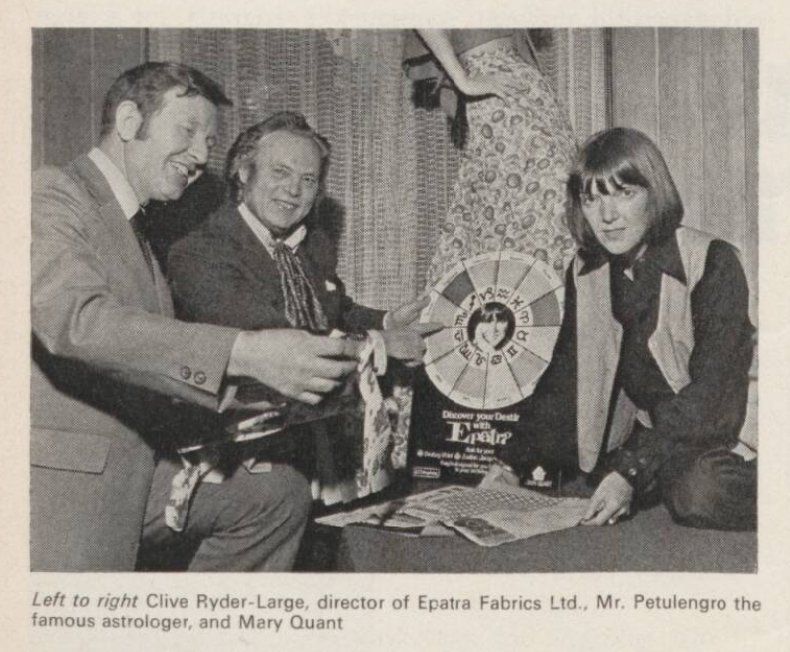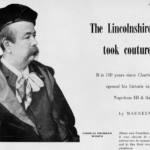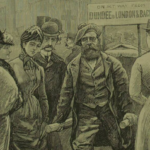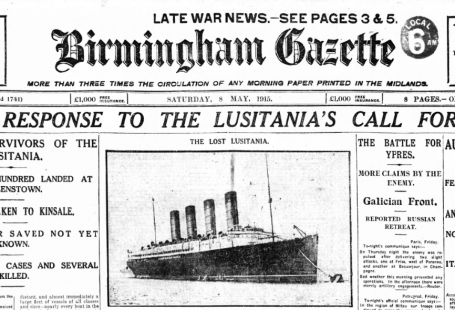This week at The Archive we are getting creative with the addition of brand new title Fashion and Craft (Creative Needlecraft), a publication devoted to all things dress and design. Meanwhile, our presses have been whirring over the past seven days to bring you another new title, the Halifax Daily Guardian, as we have added 243,130 brand new pages in all. We have also reached a landmark 74 million pages this week.
Meanwhile from Deal to Dundee, from Mearns to Melton Mowbray, from Sheerness to Shetland, we’ve updated 17 of our existing titles. So read on to discover more about our duo of new titles, as well as to discover which of our existing titles we’ve updated this week. We also delve into the pages of Fashion and Craft (Creative Needlecraft) to celebrate the designs of the late legendary British fashion designer Dame Mary Quant.
Register now and explore the Archive
First published in autumn 1967, Fashion and Craft magazine was originally known as Creative Needlecraft. A quarterly publication, it was initially an educational resource that targeted universities, college and schools and their fashion, textiles and needlework departments. Indeed, as the first edition of Creative Needlecraft outlines:
Our scope is intentionally wide, catering for your different interests from Primary classes through to the young designers in Higher Education, and even to Further Education. In each number we shall do our best to meet some of your needs in one way or another by articles and ideas contributed by specialists in your field.
So what sort of content would this new publication, which was edited by Enid B. Jackson, feature? The first edition has the answer:
We will endeavour to keep you in the picture about what is new in fibres, fabrics, sewing aids, techniques, as well as presenting stimulating and provocative ideas. We look forward to hearing from you about any aspect of the subject you would like to see enlarged upon in a future number.
‘A Home Economics Publication,’ Creative Needlecraft addressed subjects such as dress, textiles and embroidery. It included instructions for different sewing techniques, like couching, alongside photographs of examples and detailed diagrams. It incorporated instructions too for less traditional items, like lampshades. Meanwhile, the title took a look at different fabrics, printing articles covering the likes of ‘Warm Fabrics for Cold Days.’
With its focus as an aid for the education sector, Creative Needlecraft furthermore featured such articles as ‘Approach to Autumn,’ which gave advice for teachers going back to school, and ‘Dressing The School Play.’ The publication also publicised fashion related exhibitions and books, as well as featuring adverts for items like sewing machines, needlecraft books and threads.
In autumn 1978 the publication changed its name to Fashion and Craft, the introduction to the September and October edition explaining how:
This month we are sending you a new magazine. Fashion and Craft is the young and vigorous daughter of Creative Needlecraft, and we think that she has inherited all her mother’s virtues but added to them the bounce and vitality of youth.
With a readership that crossed the world, from Canada to Australia and even Kiribati, in 1981 Fashion and Craft magazine was bought by Blenheim Publications. It was at this time that the publication was repositioned and relaunched to serve the consumer fashion market, all the while retaining its initial subscription base of approximately 8,000 institutions.
Fashion and Craft, however, continued to feature sewing patterns as well as in depth looks at topics in the textile world, for example publishing a ‘Knitwear Review,’ different training schemes and craft projects. Sales of Fashion and Craft got up to 25,000 per edition, and fuelled by this popularity, publication was increased from a quarterly to a bi-monthly schedule.
Filling 24 to 48 pages, Fashion and Craft magazine is a wonderful repository of the styles and design techniques from the 1960s, 1970s, 1980s and 1990s.
Our second new title of the week is the Halifax Daily Guardian, which was first published in the West Yorkshire market town of Halifax on 2 January 1906. The sister paper of the Halifax Weekly Guardian, which was by then ‘nearing the seventy-fifth year of its existence,’ the Daily Guardian was founded to provide the citizens of Halifax, and the nearby towns of Elland and Sowerby Bridge, with more up-to-date news, as the first edition explains:
For approximately three-quarters of a century [the ‘Halifax Weekly Guardian’] has endeavoured to faithfully reflect the life of the town and of the thickly populated district in which it has enjoyed so extensive a circulation. But time creates great changes, and in journalism this is especially so. Nowadays the public demand information and news as speedily as it can be published, hot, as it were, from the printing press. This demand we shall endeavour to fulfil, and although it will mean considerable labour and great difficulty, no effort will be spared to secure the position we have set out to acquire.
The road to publication, however, was not a smooth one, as the debut edition of the Halifax Daily Guardian explains:
…when we inform our readers that only one month has been available for office extensions, the installation of the new machinery, the arrangement of the telegraphic and telephonic services, and the hundred and one other things which demand attention, we feel sure that we may count upon their kindly forbearance.
Filling four pages and costing just one halfpenny, the new newspaper went by the full name of the Halifax Daily Guardian and Elland and Sowerby Divisions’ Express. A delightful mix of national and international news, amongst more snackable items like ‘Tea-Table Talk,’ the Halifax Daily Guardian published parliamentary notices alongside the latest news from ‘to-day’s telegrams.’ It also incorporated a local view, printing updates from the likes of Halifax Parish Church, Halifax Junior Conservatives and the West Riding Quarter Sessions.
Also fitting within the Halifax Daily Guardian’s four pages were views from readers of the newspaper, a look at the theatres, as well as notices of births, marriages and deaths.
That may be it from our wonderful new duo of titles this week (although more from Fashion and Craft (Creative Needlecraft) later), but we have a feast for you from our 17 updated titles of the week. With a staggering 113,938 new pages added this week is the Wolverhampton Express and Star, whilst the week also sees big updates to the Melton Mowbray Gazette and Vale of Belvoir Gazette. The last seven days have also seen somewhat of a Kentish theme to our updated titles, with over 10,000 new pages joining Maidstone titles the South Eastern Gazette and the Maidstone Telegraph, as well as Ashford’s Kentish Express.
From the south of the United Kingdom to the north, we’ve also updated five of our Scottish titles, with new pages joining the likes of the Oban Times and Argyllshire Advertiser and the Dundee Weekly News.
The Designs and Opinions of Dame Mary Quant
As an important guide to the latest fashions and trends, Fashion and Craft (Creative Needlework) magazine printed many features about one of the 20th century’s most important designers, Mary Quant. Born in 1930 in Woolwich, London, Mary Quant began her design career in the 1950s and her innovations would come to define the fashions of the 1960s, taking credit for the ground-breaking miniskirt design. Her design career extended long beyond the 1960s, and she was appointed Dame Commander of the Order of the British Empire in 2015.
So what light can Fashion and Craft magazine shed on the designs and opinions of Mary Quant? A great deal is the answer. Take, for example, this snippet of a conversation between the designer and her husband (and business partner) Alexander Plunket Green published in what was then Creative Needlework in the spring of 1970.
Mary is quoted as saying:
‘There are no rules in fashion to-day and it’s much more fun. Fashion happens at all levels. There are a million sorts of fashion all going on at the same time. People can put clothes together in an individual way.’
The couple go on to muse how in ‘Paris every girl is identical,’ whilst in London ‘every girl is different,’ noting how ‘English girls are more adventurous, they have more courage to be different and odd.’
Meanwhile in 1974 Creative Needlecraft reports how, for the ‘first time,’ Mary Quant had ‘turned her talent to dress materials for the home dressmaker.’ Using ‘new Crimplene fabrics,’ she had chosen ‘window pane check for the fluid skirt and teamed a neat tiny double check pattern for the blouse,’ both made from a Butterick pattern.
In 1975 Creative Needlecraft journalist Marie Lecko interviewed Mary Quant. Lecko describes her impressions of the designer as a ‘deeply thoughtful and caring person,’ the interview providing an insight on Quant’s early compulsion to design. As Quant herself describes:
‘Very early on in my life I can remember cutting up a bedspread and making an outfit for myself, and I did get into trouble!’
Lecko outlines Quant’s involvement with ICI (Imperial Chemical Industries) in creating designs for the ‘home dressmaker.’ Quant relates how:
‘…I loved working it out. I worked with five knitters and used the five major paper pattern companies. The fabrics can be used on their own, or as in my collection in co-ordination. The jersey media is an exciting and very easy one and I hope everyone will enjoy working with it as I have done in the designing.’
Creative Needlecraft then featured a full double-page spread of so-called ‘Quant Style.’
In 1976 Mary Quant was back in the pages of Fashion and Craft with her special zodiac designs. Listing out a design for each of the zodiac signs, Quant described how she had created them for ‘today’s woman, a woman who is emancipated and feminine at the same time.’ As it is Pisces season at the moment, here is the outline of the design for that particular sign:
The dreamer who can at one time be a poet, but can also adapt to the mood of movement. She loves the water and her designs are full of movement, flowery and feathery on the jacquard, marbly in effect with soft watery colours on the print. Colour influence: lilac time.
As the author of this blog is a Virgo, she thought to include its description here, as Fashion and Craft also included a photograph of the Virgo design:
Innocent flowers make up a very feminine design on the jacquard. For the traditionally pure and fresh lady, the print shows young maidens gathering corn among summery trees. Soft and romantic, both designs have a great feeling of movement. Colour influence: honey corn.
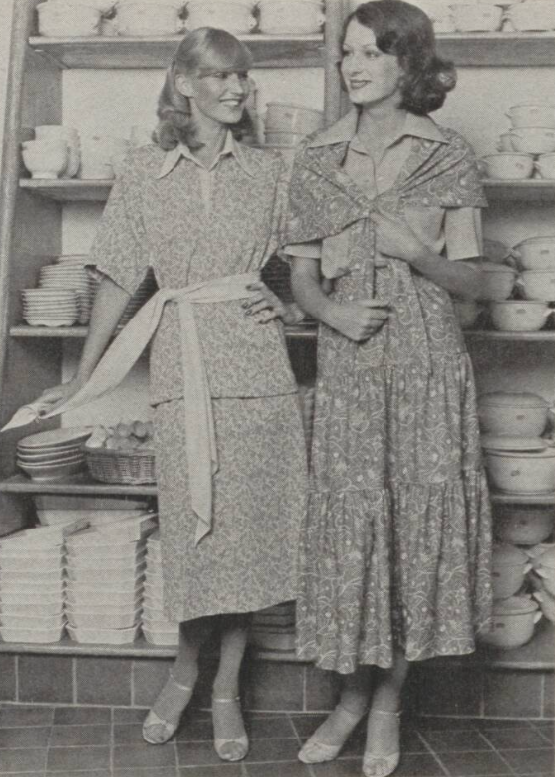
Explore more of Fashion and Craft (Creative Needlecraft) on The Archive to learn more about the fashions, designs, trends and materials of the latter half of the twentieth century.
New Titles
| Title | Years Added |
| Fashion and Craft (Creative Needlecraft) | 1967-1992 |
| Halifax Daily Guardian | 1906-1909 |
Updated Titles
This week we have updated 17 of our existing titles.
You can learn more about each of the titles we add to every week by clicking on their names. On each paper’s title page, you can read a FREE sample issue, learn more about our current holdings, and our plans for digitisation.
| Title | Years Added |
| Beverley Guardian | 1986 |
| Deal, Walmer & Sandwich Mercury | 1992 |
| Dundee Weekly News | 1986 |
| Kentish Express | 1975, 1977, 1985-1986, 1992 |
| Kentish Gazette | 1986, 1995 |
| Maidstone Telegraph | 1974, 1977, 1992 |
| Mearns Leader | 1958 |
| Melton Mowbray Times and Vale of Belvoir Gazette | 1906-1910, 1912-1916, 1919-1920, 1922-1928, 1931, 1963-1965, 1969, 1971-1972 |
| Mid Sussex Times | 1985 |
| Motherwell Times | 1986 |
| Northampton Herald | 1872, 1911 |
| Oban Times and Argyllshire Advertiser | 1879 |
| Retford, Worksop, Isle of Axholme and Gainsborough News | 1983 |
| Sheerness Times Guardian | 1992 |
| Shetland Times | 2000 |
| South Eastern Gazette | 1970, 1973-1974, 1976, 1979 |
| Wolverhampton Express and Star | 1965, 1969-1970, 1976, 1979-1983 |
You can keep up to date with all the latest additions by visiting the recently added page. You can even look ahead to see what we’re going to add tomorrow.


